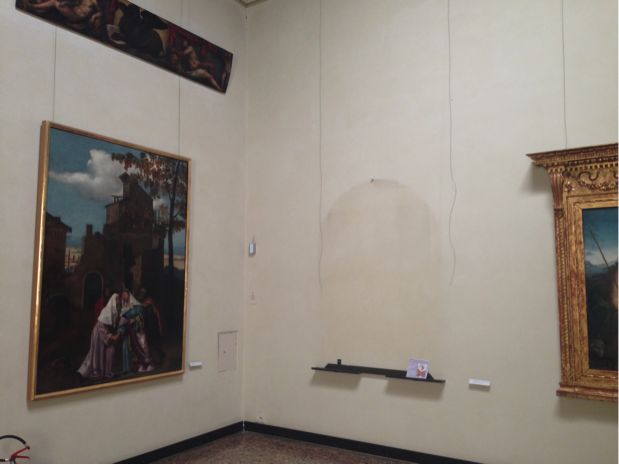‘With the appointment of these 20 people of such great international expertise, the Italian museum system is turning the page and making up for decades of backwardness’. So said Italian culture minister Dario Franceschini yesterday, announcing the 20 museum directors who are to take charge at some of the country’s most important institutions and heritage sites. These ‘super directors’ – as the Italian press has nicknamed them – will head up museums and archaeological sites that have, for the first time in the modern era, been granted financial autonomy. These include the Galleria degli Uffizi and Galleria dell’Accademia in Florence, the Gallerie dell’Accademia in Venice, the Museo Archeologico Nazionale and Museo di Capodimonte in Naples, and the Galleria Borghese in Rome.
There are causes to be optimistic, not least because in Franceschini the Italian culture ministry now has a leader who has acknowledged decades of structural problems, funding restrictions and managerial oversights. Of the 20 new directors, 10 are women – a positive move in a country in which the glass ceiling has often seemed to be made of reinforced double-glazing to those trying to break through it. Seven are foreigners, and four are Italians returning to the country from international jobs. They should bring not only connections, but the experience of working in institutions that have developed independent or commercial funding streams to supplement public subsidies.

The German scholar Eike Schmidt moves from the Minneapolis Institute of Arts to direct the Uffizi in Florence. Photo: MIA
The headline here is the appointment of the German Eike Schmidt to direct the Uffizi in Florence. Since 2009, Schmidt has been in charge of sculpture and decorative arts at the Minneapolis Institute of Arts, a museum that has significantly raised its national profile in the past decade through ambitious exhibition programming, significant acquisitions and an impressive sense of focused activity. He is a widely respected scholar of sculpture who has also spent time at a large commercial organisation; he was as director of European sculpture and works of art at Sotheby’s from 2008–09.
Other appointments to have caught my eye include that of James Bradburne at the Pinacoteca di Brera in Milan. Bradburne put together a strong exhibition programme as director of the Fondazione Palazzo Strozzi in Florence from 2006–15, where he also developed a curatorial philosophy that stresses absolute attention to detail. It will be interesting to see how his Kunsthalle experience translates into the management of a major collection. Cristiana Collu is the new director of the Galleria nazionale d’arte moderna e contemporanea (GNAM) in Rome, having brought the Museo di arte moderna e contemporanea di Trento e Rovereto (MART) to European notice over a three-year period. Marco Pierini, who has expertise in both contemporary and historical art institutions, takes over at the Galleria Nazionale dell’Umbria.
There are obvious winners and losers. The shortlists for each position were published earlier this year, offering a peculiar insight into who had made blanket applications for jobs and which former directors were reapplying for their positions. The only director to hold on to their post in a newly autonomous museum is Anna Coliva at the Galleria Borghese; in Turin, meanwhile, Enrica Pagella moves from the Fondazione Torino Musei to direct the Polo Reale di Torino, which encompasses five museums in the city. The principal brutta figura experience belongs to Antonio Natali, the former director of the Uffizi. He was publicly shortlisted to return to the institution but now cedes his role to Schmidt.

The Galleria dell’Accademia in Venice must act fast to address conservation and safety issues within its own building
Many of the new directors will inherit crises that need to be confronted immediately. There will be no honeymoon for the French art historian Sylvain Bellenger at Capodimonte, where – as La Repubblica recently reported – the gallery conditions are so atrocious since the air conditioning system failed two months ago that many visitors are demanding their ticket money back, and the museum has had to warn old people and those with babies against visiting. For many of these museums, the Gallerie dell’Academia and the Museo Archeologico Nazionale among them, it is imperative that the new directors publish strategies for the improvement of crumbling museum fabrics and the visitor experience as soon as possible, as well as for how they propose to bolster the budgets of their institutions.
Franceschini may have talked about turning the page, but this announcement must be only the beginning where the modernisation of the Italian museum system is concerned. In a small irony, the press release published yesterday by the Italian culture ministry boasted of its international advisory panel including Nicholas Penny, ‘director of the National Gallery of London’. It is hardly a secret that Penny retired from that role last week. Major steps forward then, but much work to do before the Italian museum system can genuinely claim to be up to date.
View the full list of appointments here.
Lead image: used under Creative Commons licence (CC BY-SA 3.0)

Italy’s ‘super directors’ – the winners and losers
Photo: Welleschik/Wikimedia Commons
Share
‘With the appointment of these 20 people of such great international expertise, the Italian museum system is turning the page and making up for decades of backwardness’. So said Italian culture minister Dario Franceschini yesterday, announcing the 20 museum directors who are to take charge at some of the country’s most important institutions and heritage sites. These ‘super directors’ – as the Italian press has nicknamed them – will head up museums and archaeological sites that have, for the first time in the modern era, been granted financial autonomy. These include the Galleria degli Uffizi and Galleria dell’Accademia in Florence, the Gallerie dell’Accademia in Venice, the Museo Archeologico Nazionale and Museo di Capodimonte in Naples, and the Galleria Borghese in Rome.
There are causes to be optimistic, not least because in Franceschini the Italian culture ministry now has a leader who has acknowledged decades of structural problems, funding restrictions and managerial oversights. Of the 20 new directors, 10 are women – a positive move in a country in which the glass ceiling has often seemed to be made of reinforced double-glazing to those trying to break through it. Seven are foreigners, and four are Italians returning to the country from international jobs. They should bring not only connections, but the experience of working in institutions that have developed independent or commercial funding streams to supplement public subsidies.
The German scholar Eike Schmidt moves from the Minneapolis Institute of Arts to direct the Uffizi in Florence. Photo: MIA
The headline here is the appointment of the German Eike Schmidt to direct the Uffizi in Florence. Since 2009, Schmidt has been in charge of sculpture and decorative arts at the Minneapolis Institute of Arts, a museum that has significantly raised its national profile in the past decade through ambitious exhibition programming, significant acquisitions and an impressive sense of focused activity. He is a widely respected scholar of sculpture who has also spent time at a large commercial organisation; he was as director of European sculpture and works of art at Sotheby’s from 2008–09.
Other appointments to have caught my eye include that of James Bradburne at the Pinacoteca di Brera in Milan. Bradburne put together a strong exhibition programme as director of the Fondazione Palazzo Strozzi in Florence from 2006–15, where he also developed a curatorial philosophy that stresses absolute attention to detail. It will be interesting to see how his Kunsthalle experience translates into the management of a major collection. Cristiana Collu is the new director of the Galleria nazionale d’arte moderna e contemporanea (GNAM) in Rome, having brought the Museo di arte moderna e contemporanea di Trento e Rovereto (MART) to European notice over a three-year period. Marco Pierini, who has expertise in both contemporary and historical art institutions, takes over at the Galleria Nazionale dell’Umbria.
There are obvious winners and losers. The shortlists for each position were published earlier this year, offering a peculiar insight into who had made blanket applications for jobs and which former directors were reapplying for their positions. The only director to hold on to their post in a newly autonomous museum is Anna Coliva at the Galleria Borghese; in Turin, meanwhile, Enrica Pagella moves from the Fondazione Torino Musei to direct the Polo Reale di Torino, which encompasses five museums in the city. The principal brutta figura experience belongs to Antonio Natali, the former director of the Uffizi. He was publicly shortlisted to return to the institution but now cedes his role to Schmidt.
The Galleria dell’Accademia in Venice must act fast to address conservation and safety issues within its own building
Many of the new directors will inherit crises that need to be confronted immediately. There will be no honeymoon for the French art historian Sylvain Bellenger at Capodimonte, where – as La Repubblica recently reported – the gallery conditions are so atrocious since the air conditioning system failed two months ago that many visitors are demanding their ticket money back, and the museum has had to warn old people and those with babies against visiting. For many of these museums, the Gallerie dell’Academia and the Museo Archeologico Nazionale among them, it is imperative that the new directors publish strategies for the improvement of crumbling museum fabrics and the visitor experience as soon as possible, as well as for how they propose to bolster the budgets of their institutions.
Franceschini may have talked about turning the page, but this announcement must be only the beginning where the modernisation of the Italian museum system is concerned. In a small irony, the press release published yesterday by the Italian culture ministry boasted of its international advisory panel including Nicholas Penny, ‘director of the National Gallery of London’. It is hardly a secret that Penny retired from that role last week. Major steps forward then, but much work to do before the Italian museum system can genuinely claim to be up to date.
View the full list of appointments here.
Lead image: used under Creative Commons licence (CC BY-SA 3.0)
Unlimited access from just $16 every 3 months
Subscribe to get unlimited and exclusive access to the top art stories, interviews and exhibition reviews.
Share
Recommended for you
New directors announced for 20 of Italy’s top museums
Introducing the Magnificent Twenty…
The Accademia in Venice is falling to pieces
I cannot remember seeing a museum building in such an appalling state
Italy’s Digital Ruins
When will Italian museums do something to improve their websites?